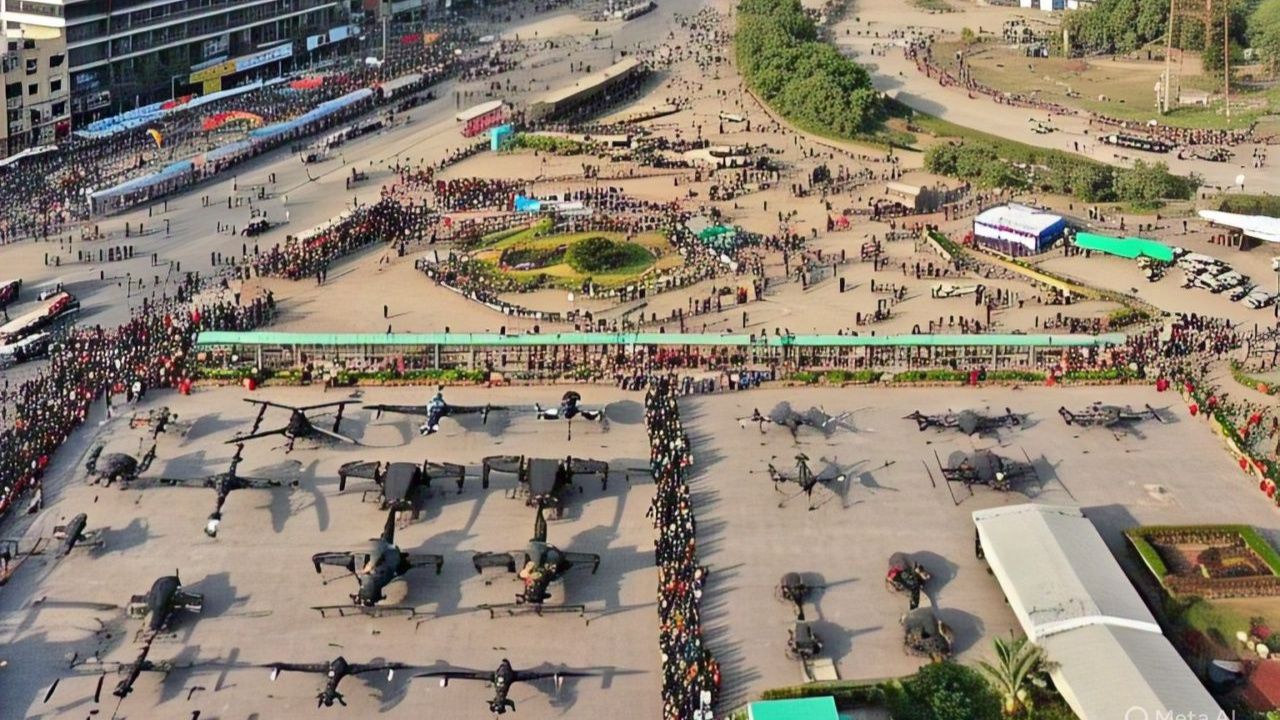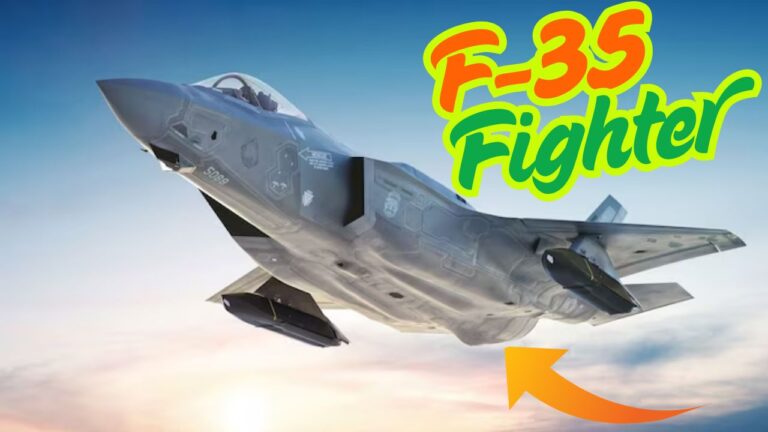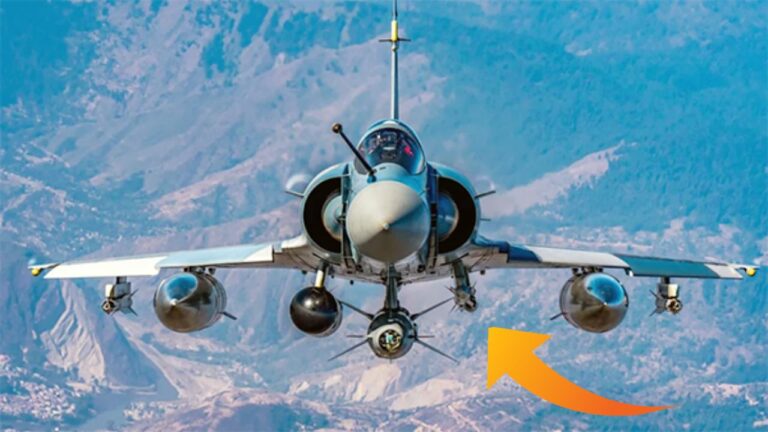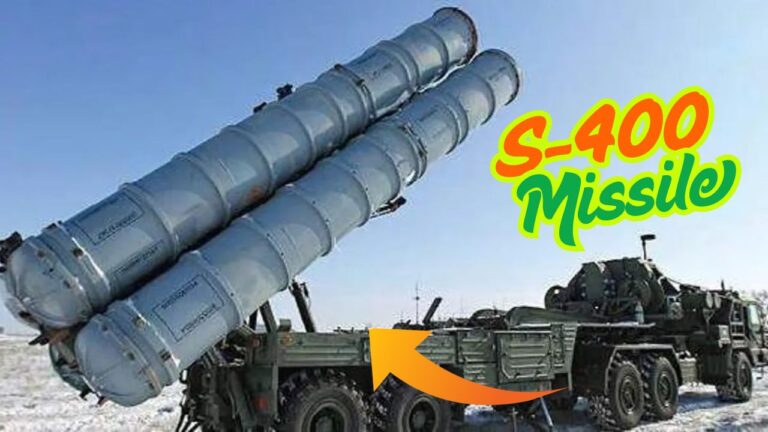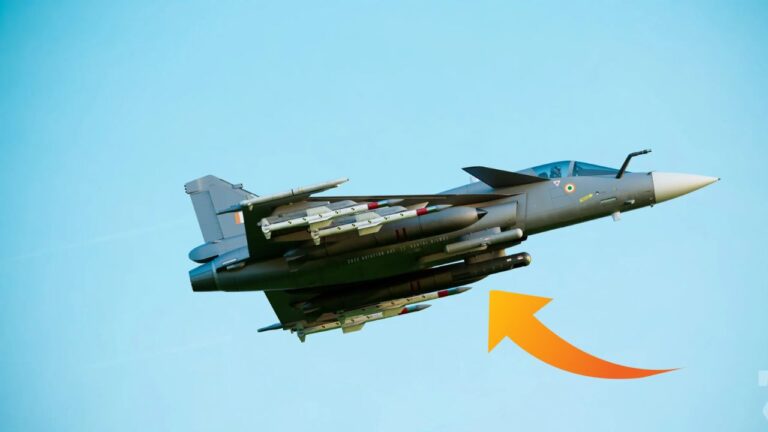India and Pakistan’s cross-border tension has entered a new conflict phase. Drones play a key role in both nations’ military arsenals. India and Pakistan now use Unmanned Aerial Vehicles (UAVs) for surveillance, intelligence, and targeted strikes. However, there is a big gap in the number, capability, and origin of these UAVs. Each country claims to intercept the other’s drones to assert control of the skies. Despite drones’ growing importance in modern warfare, their effectiveness in high-stakes scenarios remains largely untested. As both nuclear powers enhance their drone warfare, the stakes in this aerial battle increase. This situation brings new challenges for security, strategy, and international stability.
Disparity in UAV Quantities
India and Pakistan have a clear difference in their UAV fleets. India has about 200 Medium Altitude Long Endurance (MALE) UAVs, 980 mini-UAVs, and more models being procured. On the other hand, Pakistan’s fleet is much smaller. It includes around 60 MALE UAVs, 60 naval UAVs, 70 air force tactical UAVs, 100 army tactical UAVs, and some mini-UAVs. While sources may vary, the gap in UAV numbers between the two countries is clear. This shows a difference in their military capabilities.
Procurement Origins and Strategic Preferences
India and Pakistan have both worked on building their own UAV programs lately. Still, much of their drone fleets rely on international imports. This shows their strategic choices in procurement. India mainly buys UAVs from Israel and the United States. Notable models include the Heron series and the MQ-9B SeaGuardian. In contrast, Pakistan’s UAV fleet mainly includes Turkish and Chinese systems. Key models are the Bayraktar TB2 and CH-4, reflecting a different sourcing strategy for military tech.
Technological Gaps and Battlefield Integration
Both nations have improved their UAV capabilities, but they differ greatly in technology and effectiveness. India uses advanced loitering munitions like the Israeli-made Harop and Harpy. These drones are meant for precise strikes and electronic warfare. On the other hand, Pakistan relies on the Turkish Bayraktar TB2 drones, known for their success in the 2020 Nagorno-Karabakh War. These different choices show the varying levels of battlefield integration, combat use, and operational experience in each country.
Read More: Rafale vs JF17 Thunder and Su30 vs F-16: A Comparative Analysis
India’s UAVs
Harpy
| Feature |
Details |
| Type |
Loitering munition, precision-guided weapon |
| Manufacturer |
Israel Aerospace Industries (IAI) |
| Primary Mission |
Suppression of Enemy Air Defenses (SEAD) and Destruction of Enemy Air Defenses (DEAD) |
| Operation |
Fully autonomous; operates in “fire-and-forget” mode, capable of self-guided attack |
| Targeting System |
Anti-radiation seeker; homes in on radar emissions to locate and strike enemy radar systems |
| Loitering Time |
Up to 9 hours, allowing for extended surveillance and strike capabilities |
| Range |
Up to 500 km, providing long-range strike potential |
| Warhead |
32 kg high-explosive warhead, designed for significant damage to enemy radar and air defense systems |
| Speed |
Approximately 700 km/h, enabling rapid response and evasion of countermeasures |
| Weight |
135 kg, compact enough for air deployment from various platforms |
| Guidance |
GPS/INS with real-time communication for mid-course corrections and targeting updates |
| Cost |
$4 million per unit, positioning it as a high-cost but highly effective system for SEAD/DEAD operations |
| Deployment Platforms |
Air-launched from platforms like fighter aircraft, UAVs, or drones |
| Operational History |
Used by multiple countries, including Israel, India, and others in various military operations |
| Countermeasures |
Can be countered by advanced jamming systems, but its autonomous nature and radar-seeking capability make it highly resilient to traditional air defenses |
Harop
| Feature |
Details |
| Type |
Loitering munition with surveillance, strike, and reconnaissance capabilities |
| Developer |
Israel Aerospace Industries (IAI) |
| Primary Mission |
Suppression of Enemy Air Defenses (SEAD), Destruction of Enemy Air Defenses (DEAD), precision strikes on high-value targets |
| Loitering Time |
Up to 9 hours, allowing prolonged surveillance and engagement of targets over extended periods |
| Operational Range |
Up to 1,000 km, enabling deep standoff strikes far behind enemy lines |
| Payload |
23 kg high-explosive warhead, designed to incapacitate radar systems, air defense installations, and other key targets |
| Launch Platforms |
Canister-launched from land vehicles, naval vessels, and configured for air launch, offering flexibility in deployment |
| Jamming Resistance |
Immune to GNSS/satellite navigation jamming, providing reliable operation in contested or GPS-denied environments |
| Attack Profile |
Can engage targets from multiple angles, with an option to return if the target is not found, reducing risk of collateral damage |
| Speed |
Mach 0.8 (~980 km/h), ensuring rapid engagement and minimizing response time from adversaries |
| Guidance System |
Anti-radiation seeker for radar targeting, GPS/INS for navigation, and real-time data transmission for targeting updates |
| Countermeasures |
Advanced counter-countermeasures (CCM) such as radar and GPS signal resistance, allowing it to evade enemy defenses |
| Weight |
Approximately 135 kg, optimized for launching from various platforms while maintaining operational efficiency |
| Cost |
Estimated at $2-4 million per unit, positioning it as a high-value but effective asset for modern warfare |
| Deployment History |
Deployed by Israel and other nations for operations including air defense suppression and precision strikes on high-value targets |
| Autonomy |
Fully autonomous, capable of “fire-and-forget” missions, minimizing operator input and reducing the risk of human error |
MQ-9 Reaper
| Feature |
Details |
| Manufacturer |
General Atomics (USA) |
| Role |
Armed reconnaissance, surveillance, and precision strike; designed for both intelligence gathering and targeted strikes |
| Combat History |
Extensively used in operational theaters like Iraq, Afghanistan, and Syria for surveillance, reconnaissance, and strikes against high-value targets |
| Payload Capacity |
Up to 1,700 kg; capable of carrying a variety of munitions including Hellfire missiles, GBU precision bombs, and advanced sensors for intelligence gathering |
| Endurance |
27 hours, allowing for long-duration surveillance and strike missions without requiring frequent refueling or repositioning |
| Range |
1,850 km, with satellite control capabilities enabling global operations, providing flexibility for missions far from home bases |
| Sensor Suite |
Equipped with advanced EO/IR (Electro-optical/Infrared) sensors for day/night surveillance, Lynx Multimode Radar for real-time target tracking, and Electronic Support Measures (ESM) for signal intelligence |
| Navigation Systems |
161 embedded GPS/inertial navigation systems for precise positioning, with 35 L3 Rio Grande communication and intelligence sensor suites for real-time data transmission |
| Variants Acquired by India |
MQ-9B SeaGuardian and MQ-9B SkyGuardian, which are tailored for maritime and land-based surveillance, respectively, with additional capabilities for anti-submarine warfare and intelligence operations |
| Purchase Cost |
Approximately $32 million per unit (excluding the cost of missiles, bombs, and advanced sensors); considered a significant investment for national defense budgets |
| Operational Flexibility |
Can be used in a wide range of environments, from desert warfare to maritime patrols, with adaptability to changing mission parameters and operational theaters |
| Autonomy |
Fully autonomous flight capability, reducing the need for direct operator control during long missions, improving mission efficiency and safety |
| Reliability |
Proven reliability in combat with numerous successful missions; high levels of operational uptime and minimal failure rates under combat conditions |
| Countermeasures |
Designed to operate in contested environments with features like jamming resistance, secure communications, and the ability to avoid detection through stealthy flight profiles |
Rustom-II
| Feature |
Details |
| Developer |
Defence Research and Development Organisation (DRDO), India |
| Role |
Intelligence, Surveillance, and Reconnaissance (ISR); designed with future strike capabilities for precision strikes and strategic defense |
| Payload Capacity |
350 kg, capable of carrying Electro-Optical (EO) sensors, Synthetic Aperture Radar (SAR), and various other surveillance equipment |
| Endurance |
12 hours, providing extended operational coverage for ISR missions without requiring frequent refueling or repositioning |
| Range |
180–200 km, with plans for future upgrades to significantly increase range, extending its operational reach |
| Sensor & Equipment Suite |
Equipped with Communication Intelligence (COMINT), Electronic Intelligence (ELINT), Maritime Patrol Radar, Synthetic Aperture Radar, and Medium- and Long-Range Electro-Optics for comprehensive surveillance capabilities |
| Stealth Features |
Airframe constructed with 3mm Kevlar and Carbon Fibre Composite (CFC) to minimize radar signature, enhancing survivability in contested airspace |
| Weapons Capability |
Compatible with Helina Anti-Guided Tank Missiles (AGTM) and laser-guided rockets, enabling offensive capabilities alongside ISR roles |
| Purchase Cost |
$5–6 million per unit, positioning it as a cost-effective option for nations focused on indigenous development and procurement |
| Maintenance Cost |
20–30% lower than imported drones due to indigenous production and domestic supply chains, offering long-term savings on upkeep |
| Lifecycle |
12–15 years, offering a durable service life, with potential for upgrades and integration of future technologies throughout its operational tenure |
| Operational Status |
Currently in the testing and induction phase; reflects India’s emphasis on self-reliance in defense technology development, particularly in UAV systems |
| Future Prospects |
Expected to undergo further enhancements to improve strike capabilities, range, and integration with India’s broader defense strategy |
| Customization Potential |
Designed for flexible configuration, making it adaptable for various missions, including surveillance, reconnaissance, and precision strikes |
| Deployment Platforms |
Capable of being deployed from land-based platforms, naval vessels, and potentially air-launched systems in the future |
Pakistan’s UAVs
Bayraktar Akıncı
| Feature |
Details |
| Origin |
Turkey |
| Class |
High-Altitude Long-Endurance (HALE) Combat UAV |
| Primary Role |
Air-to-air and air-to-ground combat missions; versatile in both surveillance and precision strikes |
| Length |
12.2 meters, providing a long fuselage for optimal aerodynamics and payload capacity |
| Height |
4.1 meters, offering a streamlined profile for high-altitude, long-duration flight |
| Wingspan |
20 meters, ensuring high lift-to-drag ratio for efficient flight at high altitudes |
| Maximum Take-Off Weight |
6,000 kg, allowing for heavy payloads, including various munitions and surveillance systems |
| Payload Capacity |
1,500 kg, capable of carrying a range of armaments including air-to-air and air-to-ground missiles, precision-guided munitions (PGMs), and surveillance sensors |
| Operational Ceiling |
40,000 feet, enabling it to operate in the upper reaches of airspace, avoiding detection by conventional defense systems |
| Armament Capability |
Equipped with an array of air-to-air and air-to-ground missiles, as well as laser-guided bombs and precision-guided munitions for surgical strikes |
| Significance |
One of the most advanced and capable combat drones in Pakistan’s UAV arsenal, increasing its effectiveness in modern warfare scenarios |
| Endurance |
Long endurance, capable of staying in the air for up to 30+ hours, making it ideal for persistent reconnaissance and extended combat operations |
| Sensors & Payloads |
Equipped with high-performance EO/IR (Electro-optical/Infrared) sensors, synthetic aperture radar (SAR), and advanced communication systems for real-time data transfer |
| Stealth Features |
Designed with low radar cross-section (RCS) features, enhancing its survivability in hostile environments |
| Navigation System |
GPS/INS-based navigation system for precise targeting and flight control, supported by advanced avionics for stability and autonomy |
| Jamming Resistance |
Enhanced resistance to GPS jamming and electronic warfare (EW) threats, ensuring operational capability in contested environments |
| Cost |
Estimated at $25–30 million per unit, positioning it as a high-value asset in modern aerial combat operations |
| Lifecycle |
Designed for a service life of 15–20 years with regular upgrades, ensuring continued effectiveness across evolving battlefield technologies |
| Deployment Platforms |
Capable of operating from both ground-based airstrips and potentially from naval platforms for maritime operations |
| Future Prospects |
Likely to receive upgrades in payload capacity, range, and advanced munitions, making it a key component in future military strategy |
| Combat Record |
Proven operational effectiveness in various combat scenarios, contributing to Turkey’s influence in UAV technology development |
Bayraktar TB2
| Feature |
Details |
| Type |
Tactical Armed Unmanned Aerial Vehicle (UAV) |
| Origin |
Turkey |
| Manufacturer |
Baykar Technologies |
| Length |
6.5 meters, providing a compact yet stable airframe for tactical operations and improved maneuverability |
| Wingspan |
12 meters, offering excellent lift and stability, crucial for endurance and accuracy in tactical missions |
| Maximum Take-Off Weight |
700 kg, enabling it to carry a significant payload while maintaining fuel efficiency and operational range |
| Payload Capacity |
150 kg, capable of carrying a variety of precision-guided munitions (PGMs), surveillance equipment, and targeting systems |
| Cruising Speed |
130 km/h, providing an optimal balance between endurance and operational efficiency for surveillance and strike missions |
| Maximum Speed |
220 km/h, offering the speed necessary to engage targets quickly and escape from hostile areas |
| Endurance |
Up to 27 hours, allowing for prolonged reconnaissance, surveillance, and strike operations with minimal need for refueling |
| Operational Altitude |
18,000 feet (5,486 meters), enabling high-altitude surveillance and standoff capabilities |
| Primary Roles |
Intelligence, Surveillance, Target Acquisition, Reconnaissance (ISTAR), and strike missions, making it versatile for a range of military operations |
| Armament Capability |
Equipped with MAM-L and MAM-C smart micro munitions, designed for precision strikes on both moving and stationary targets |
| Notable Combat Use |
Played a major role in conflicts such as Libya, Syria, and the 2020 Nagorno-Karabakh War, where it demonstrated effectiveness in both ISR and strike roles |
| Navigation System |
Advanced GPS and INS-based navigation, with autonomous flight capabilities and real-time data-sharing for operational flexibility |
| Stealth Features |
Features a reduced radar cross-section (RCS) design, enhancing its survivability during operational missions in contested airspaces |
| Jamming Resistance |
Enhanced anti-jamming features for GPS and communication systems, ensuring operational effectiveness in electronic warfare environments |
| Deployment Platforms |
Capable of launching from land-based airstrips or mobile platforms, suitable for both tactical and strategic deployment |
| Cost |
Estimated at $2–3 million per unit, offering a cost-effective solution for modern military operations |
| Maintenance |
Designed for easy maintenance with modular components, reducing downtime and operational costs |
| Lifecycle |
Typically has a service life of 10–15 years with options for upgrades to extend operational effectiveness and introduce newer technologies |
| Future Prospects |
Expected to receive further upgrades to enhance combat capabilities, range, and integration with other UAVs in future military operations |
| Customizability |
Can be tailored for various mission types, with modular payloads for surveillance, electronic warfare, and strike capabilities |
CH-4
| Feature |
Details |
| Type |
Medium-Altitude Long-Endurance (MALE) Combat UAV |
| Origin |
China |
| Manufacturer |
China Aerospace Science and Technology Corporation (CASC) |
| Length |
8.5 meters, providing a balanced airframe for long-duration flights while maintaining stability and control during combat operations |
| Wingspan |
18 meters, designed to optimize fuel efficiency and enhance endurance for extended operational range |
| Maximum Take-Off Weight |
1,330 kg, allowing for the integration of a wide range of surveillance and combat equipment |
| Payload Capacity |
345 kg, capable of carrying precision-guided bombs, air-to-surface missiles, and surveillance sensors |
| Endurance |
Up to 40 hours for the CH-4A variant (primarily for ISR missions) and 14 hours for the CH-4B variant (combat-focused) |
| Operational Ceiling |
26,000 feet (approximately 8,000 meters), providing high-altitude capability to avoid radar detection and engage targets at standoff distances |
| Range |
2,000–5,000 km, depending on the version and satellite link, enabling extended surveillance and precision strike missions across large areas |
| Cruising Speed |
180 km/h, offering an efficient balance between endurance and responsiveness during reconnaissance or combat operations |
| Primary Roles |
Intelligence, Surveillance, Reconnaissance (ISR), and precision strike missions, making it versatile in both tactical and strategic roles |
| Armament Capability |
Can carry a range of guided bombs and air-to-surface missiles, including the AR-1, FT-9, and HJ-10, designed for precise strikes against both stationary and moving targets |
| Navigation & Sensors |
Equipped with advanced sensors such as synthetic aperture radar (SAR), electro-optical/infrared (EO/IR) sensors, and GPS/INS navigation for precise targeting |
| Jamming Resistance |
Features anti-jamming technology to counter GPS and communication interference, ensuring continued operational effectiveness in contested environments |
| Stealth Features |
Designed with a reduced radar cross-section (RCS) to enhance its survivability against enemy air defense systems |
| Deployment Platforms |
Can be launched from fixed ground-based airstrips or mobile platforms, offering flexibility for both strategic and tactical operations |
| Cost |
Estimated at $1–2 million per unit, offering a cost-effective solution for sustained surveillance and strike missions |
| Lifecycle |
Designed for a service life of 10–15 years, with potential for upgrades to enhance payload capacity, sensor suites, and strike capabilities |
| Combat Record |
Has been used in various military operations, showcasing its capability for both ISR and precision strikes in hostile environments |
| Maintenance |
Modular design for easier maintenance, reducing downtime and operational costs, with improved support through indigenous manufacturing |
| Future Upgrades |
Potential upgrades include enhanced sensors, larger payload capacity, longer endurance, and improved stealth capabilities for future warfare scenarios |
| Operational Status |
Widely used by China and exported to several countries, marking its effectiveness and reliability in combat and surveillance roles |
Shahpar
| Feature |
Details |
| Type |
Tactical Unmanned Aerial Vehicle (UAV) |
| Developer |
Global Industrial Defence Solutions (GIDS) in collaboration with National Engineering and Scientific Commission (NESCOM) |
| Fuselage Length |
4.2 meters, designed for compact size to facilitate quick deployments and tactical operations |
| Wingspan |
6.6 meters, optimized for flight stability and endurance, balancing maneuverability with sufficient lift capacity |
| Cruising Speed |
150 km/h, providing a balance between efficient long-range operation and responsive actions during surveillance and reconnaissance missions |
| Operational Endurance |
Over 7 hours, enabling continuous surveillance and reconnaissance over extended periods for strategic or tactical operations |
| Maximum Take-Off Weight |
480 kg, allowing for the integration of various payloads, including surveillance cameras, communication systems, and light weaponry |
| Operational Altitude |
Up to 5,000 meters, providing the flexibility to operate in both low and high-altitude environments for various operational scenarios |
| Primary Roles |
Intelligence, Surveillance, Reconnaissance (ISR), and disaster response, with an emphasis on gathering intelligence and providing real-time data |
| Payload Capacity |
Equipped to carry an array of surveillance equipment such as EO/IR cameras, radar, and communication systems for tactical operations |
| Sensor Suite |
Includes electro-optical/infrared (EO/IR) sensors, Synthetic Aperture Radar (SAR), and communications relay equipment for enhanced ISR capabilities |
| Navigation System |
Integrated GPS/INS navigation for precise positioning and geospatial mapping during missions, ensuring accurate data collection |
| Jamming Resistance |
Features anti-jamming technologies to ensure continued communication and navigation in contested or hostile environments |
| Armament Capability |
Can be configured for carrying light precision munitions or payloads for tactical strikes if required in combat scenarios |
| Stealth Features |
While not specifically designed for stealth, the UAV is constructed with materials that help reduce its radar and thermal signatures |
| Launch Platform |
Can be launched from fixed ground-based platforms, mobile ground units, or even forward-deployed teams, offering flexibility in the field |
| Cost |
Estimated at $1–2 million per unit, providing an affordable solution for extended ISR operations and real-time situational awareness |
| Maintenance |
Modular design for ease of maintenance and quicker turnaround times, ensuring high operational availability |
| Lifecycle |
Designed for a service life of approximately 8–10 years, with the potential for upgrades in sensor systems and payload capacity |
| Combat/Operational Record |
Primarily used for surveillance and reconnaissance missions, including border patrols, military operations, and disaster response efforts |
| Operational Status |
Actively deployed by military and paramilitary forces for tactical ISR missions, with growing export demand for its reliability and capabilities |
| Future Upgrades |
Potential for enhanced sensors, improved communication systems, longer endurance, and larger payload capacities for future missions |
The launch of the Shahpar II in 2021, followed by the Shahpar-III in 2024, shows Pakistan’s focus on improving its UAV capabilities. The Shahpar II brought significant improvements in endurance and altitude, meeting needs for longer missions in tough conditions. The Shahpar-III builds on this by adding Intelligence, Surveillance, and Reconnaissance (ISR) features, along with multi-role combat abilities. This makes it a flexible asset for defense and strategic tasks.
These advancements highlight Pakistan’s commitment to boosting its drone technology. They improve the country’s ability to carry out precision strikes, gather real-time intelligence, and perform various missions effectively. As tensions rise in the region, these UAVs could be vital in Pakistan’s defense strategy, offering both surveillance and offensive options to support military efforts and improve overall effectiveness.

